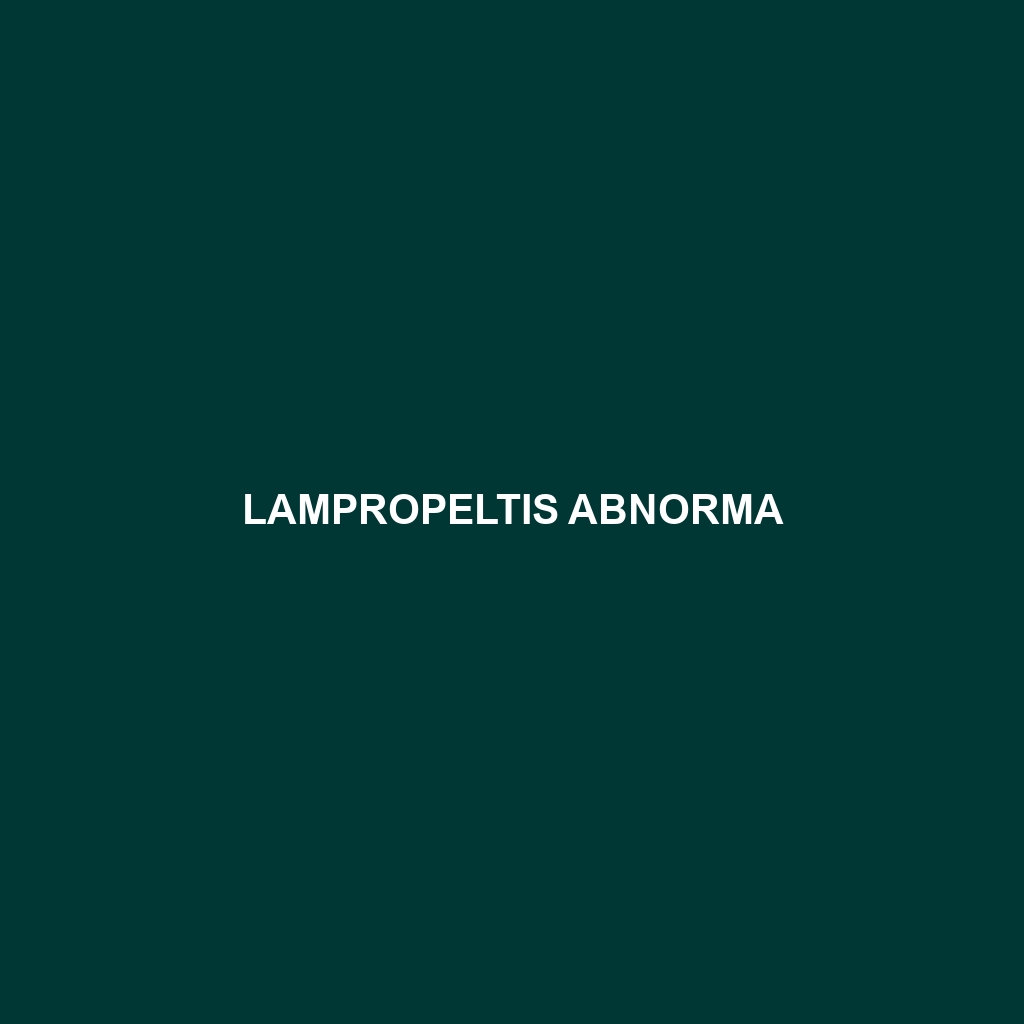Common Name
Lampropeltis abnorma
Scientific Name
Lampropeltis abnorma
Habitat
The Lampropeltis abnorma, commonly known as the Central American Kingsnake, is primarily found in the tropical rainforests and temperate forests of Central America. This species thrives in regions characterized by warm, humid climates that provide ample cover and diverse prey sources. The snake’s natural habitat ranges across countries such as Nicaragua, Costa Rica, and parts of Panama, where it frequently inhabits areas with dense foliage and a rich understory. Additionally, it can be spotted in savannas and bushy grasslands, where it utilizes the structure of the environment for hunting and camouflage.
Physical Characteristics
The Lampropeltis abnorma is a strikingly beautiful snake that can reach lengths of up to 5 feet (1.5 meters). Its body is slender, and it exhibits a variety of colors, which can range from dull brown to bright yellow or orange, often with intricate patterns of dark bands or blotches. This coloration serves as excellent camouflage within its well-foliated habitat. One of the distinguishing features of the Lampropeltis abnorma is its smooth, glossy scales that reflect light, creating a shimmering effect. The head is slightly broader than the neck, equipped with sharp, beady eyes that allow for keen vision, especially in low-light conditions.
Behavior
The Lampropeltis abnorma exhibits a variety of fascinating behaviors. It is primarily a nocturnal species, meaning it is most active during the night, which allows it to hunt efficiently and avoid predation. When hunting, it relies heavily on its acute sense of smell and heat-sensing pit organs to locate warm-blooded prey. Mating rituals occur during the wet season, with males often engaging in competitive displays to attract females. These snakes are generally solitary, except during the breeding season, and can be territorial depending on their habitat’s density.
Diet
The Lampropeltis abnorma is classified as a carnivore, predominantly feeding on small mammals, lizards, and birds. Its diet is versatile, and the snake is known to consume rodents such as mice and rats, which are abundant in its habitat. Occasionally, they may also ingest larger prey, including other snakes, due to their robust body structure and powerful constriction technique when immobilizing prey. Their feeding habits are crucial for controlling pest populations in their ecosystems.
Reproduction
The reproductive cycle of the Lampropeltis abnorma typically occurs during the rainy season, from May to August. After a gestation period of approximately 30 to 60 days, females lay clutches of 6 to 15 eggs, which they will incubate in a moist environment. Once hatched, the young snakes are independent and are about 12 inches (30 cm) in length. Parents do not exhibit parental care after the eggs hatch, which is common among many snake species. The young are vulnerable to predators during their early life stages, making survival a challenge.
Conservation Status
As of October 2023, the Lampropeltis abnorma is classified as a species of ‘Least Concern’ according to the International Union for Conservation of Nature (IUCN). However, habitat loss due to deforestation and human encroachment poses significant threats. Conservation efforts are crucial in preserving their natural habitats and mitigating these threats. Local organizations are working to ensure the protection of forests, which serve as crucial habitats for this species.
Interesting Facts
One of the intriguing aspects of the Lampropeltis abnorma is its ability to mimic more venomous snake species, which helps it avoid predation. Additionally, these snakes are known for their impressive constriction abilities, using their muscular bodies to subdue prey quickly. This adaptability contributes to their resilience in various environments. They also play an essential role in local folklore and are often considered symbols of transformation due to their unique patterns and colors.
Role in Ecosystem
The Lampropeltis abnorma serves a vital role in its ecosystem as both a predator and prey species. By feeding on small mammals and other reptiles, it helps to maintain balanced populations of these animals, thereby contributing to the overall health of its habitat. As a part of the local food web, they support larger predators, such as birds of prey and larger snakes. Moreover, through their predatory habits, they help control pest populations, enhancing agricultural productivity in their geographic range.
